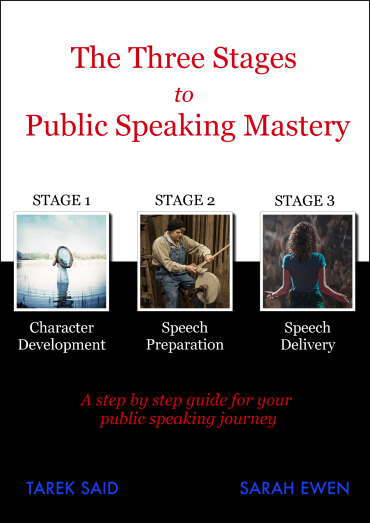HOW TO KEEP YOUR COMMUNICATION REAL
Gone are the days of an audience being won over by a flashy PowerPoint presentation, an uninspiring three point message or polished delivery designed to mask zero content.
Today there is zero tolerance for robotic predictable ‘cookie cutter’ public speakers that share a bland and insignificant message.
In this technological era, the opportunity for face-to-face communication with other human beings is becoming more and more rare.
As a result, when the opportunity does arise and you get an opportunity to speak in-front of an audience this cannot be wasted.
Audiences today are seeking more than anything to build genuine rapport and connection with you as a speaker and they are very quick to detect a ‘fake it till you make it’ speaker.
Knowing all this puts speakers under more pressure than ever before to share a clear message of value, nail the delivery and build meaningful connection.
Being aware all this, as a public speaker what then must you do? From my experience I recommend that you keep it REAL!
To keep it REAL as a speaker you need to be:
1. Relatable
Think about your audience and think about your speech. Is it appropriate for your audience? Will it resonate? Will they be able to relate to what you are saying?
Too many speakers get on stage and talk about something important to them without considering whether it will be important to the audience.
As a speaker failing to consider this can result in alienating a large chunk of the audience without even realising it.
For example, pet lovers and parents of young children can be guilty of this. The speaker assumes that everyone else has same the domestic situation as them.
Don’t get me wrong, a story or two about a cat’s antics or terrible two year old tantrums can be fairly entertaining but it can’t be the only stories, examples and anecdotes that are used (unless of course you are speaking a cat convention or a parents group).
Reason being the subgroup of the audience allergic to cats and kids will find it very difficult to relate to your message and ultimately you as the speaker!
It is therefore recommended that you really think about your audience when you are crafting your speech and make sure you and your content is relatable.
2. Emotional
By this I don’t mean having an emotional melt-down on stage.
What I do mean is letting your audience experience your emotions by expressing them naturally rather than suppressing or faking them.
When emotions are suppressed or faked it usually manifests in the delivery whether the speaker is aware of it or not.
It is easily detected when body language and the words the speaker is saying do not correlate.
For example, you may say you are really excited about sharing your innovation ideas with an audience but deep down you are not really.
This may come across in over animated and unconvincing gestures or in subdued and energyless delivery.
Regardless of which emotions are involved, delivery is impacted when the speaker is not expressing true emotions.
When you fail as a speaker to express your true emotions, the audience seriously struggles to build any emotional connection with you or your speech.
This is summed up perfectly in the famous quote “They may forget what you said — but they will never forget how you made them feel” (Carl W. Buehner).
3. Authentic
This is a word that gets abused and overused in my humble opinion.
Whether it is in a job interview, panel discussion or speech, so many people love to claim that they are authentic!
However, being truly authentic is not as easy as it sounds – it comes at a price!
In being a truly authentic speaker it can cost you when you’re opinion is not popular.
It can cost you when you are unwilling to compromise on your core values and it can cost you in your relationships.
To be an authentic public speaker you need be comfortable with being yourself when standing up in-front of an audience and not a random version of you.
You need to know what your stance is on certain topics and you need to know what you are unwilling to compromise on.
Authenticity is all about being honest and some speakers find this easier to do than others.
Being honest is being open and vulnerable about what you really think and being true to yourself in terms of the content of your speech, delivery and in how you build connection with the audience.
Being true to yourself as a speaker makes you authentic.
4. Lively
When I say lively I don’t mean you need to jump around the stage with a booming voice and with high energy if you are not an extreme extrovert!
If you did you would not be relatable, emotional or authentic.
The reality is we all have different personality types and it is important for you to be true to yours.
However, you also need to bring the liveliest expression of your personality on stage to engage your audience.
Many people are animated and interesting in one-on-one conversations but when they stand up in front of an audience a professional robot like persona is often adopted that is stifling and often very boring.
Time and time again when myself and my business partner, Tarek, are giving advice to speakers we regularly recommend for people to stop holding back and to remember to bring their personality with them when they stand up to speak.
Remember keep it REAL on stage. The more you do this the easier it will become for you to share a clear message, nail the delivery and build genuine rapport and connection with your audience. Who knows as you do this you may even really enjoy it!

